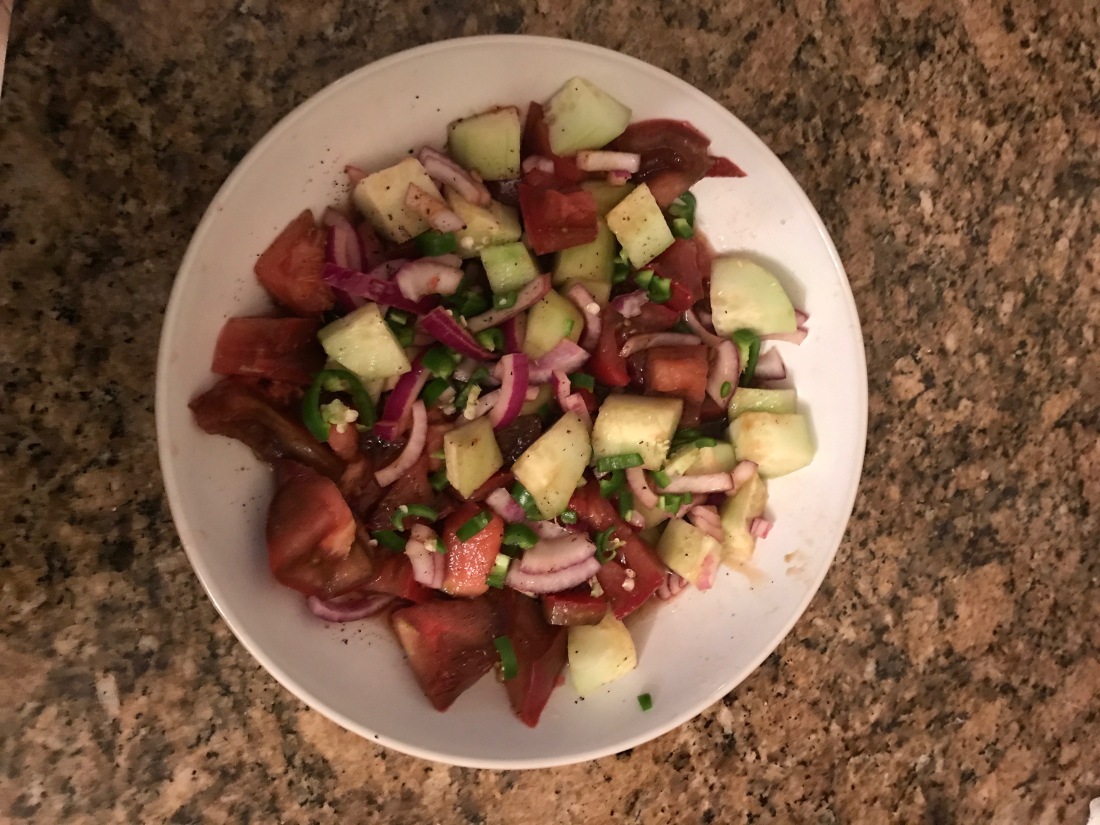I believe it is the finest tomato I have ever grown. At 370g/13oz it is not the largest, that honour goes to a ‘Marmande’, but it is the largest ‘Crimean Black’. It is not black, of course, just a dark red of a shade which looks particularly fine when mixed with golden and scarlet varieties in a tomato salad. The depth of the colour intensifies with temperature, but even in this exceptional year, I have grown this outdoor variety under glass.
What a story the ‘Crimean Black’ has to tell! It is unknown when the tomato crossed the Atlantic for the first time, but if it wasn’t with Columbus then it was probably with Cortes, sometime after AD1521. Tomatoes were being eaten in Italy by AD1544 when Mattioli describes them in his herbal, but it was slow to catch on – the first cookbook to make use of it dates from AD1692. The clue to why is recorded in the second part of its botanical name lycopersicum or ‘wolf-apple’, the German name for the nightshade berry, by which occultists could transform into werewolves. The people of Europe were divided as to the toxicity of the tomato, recognising its relationship to a known danger. The SOLANACEAE family is a curious one, containing many useful foods such as aubergines and potatoes, and many highly poisonous species too. At some point, the tomato made it to the Crimean peninsula where local ‘black’ strains developed which were suited to the hot summers. After the eponymous war, these journeyed back across Europe in the pockets of homeward-bound soldiers, eventually re-crossing the Atlantic where they grow successfully in the favourable climate of the southern United States.
The tomatoes first appeal, like that of another American import the runner bean, was as a decorative rather than a culinary plant. The runner bean too was considered toxic. Tomatoes were prized in the flower garden and as a table decoration. It wasn’t re-branded as a ‘golden apple’ until AD1554 and as pomo d’oro it spread into Polish and Russian. An almost obsolete German word paradeisapfel connects the pomo d’oro to the Garden of the Hesperides as mush as to Eden. Tomatoes have travelled far and wide, geographically and figuratively.
I’m going to send my ‘Crimean Black’ on one final, alimentary journey. Years ago, in Turkey, I ate a simple but perfect salad which was served with my grilled lamb kebabs. As I remember it, cucumber and tomato had been diced finely, there was chopped onion and green chilli, olive oil and parsley. It was at once heating and cooling, and utterly delicious. I have cucumbers and chillies from the glasshouse and parsley from a pot by the back door. I have some Muntjac for the kebabs. A Mesoamerican-Crimean tomato, an Asian deer, an Indian-Germanic cucumber – all local. Fusion cuisine at its finest.


It is funny now to think of them as being grown originally because they were just pretty, especially since they are not all that pretty by modern standards. Grapefruit was originally developed as a small ornamental tree that was a bit more tolerant to frost than one of its tropical ancestors. Only after it was popularized as an ornamental, people discovered how good the fruit is.
LikeLike